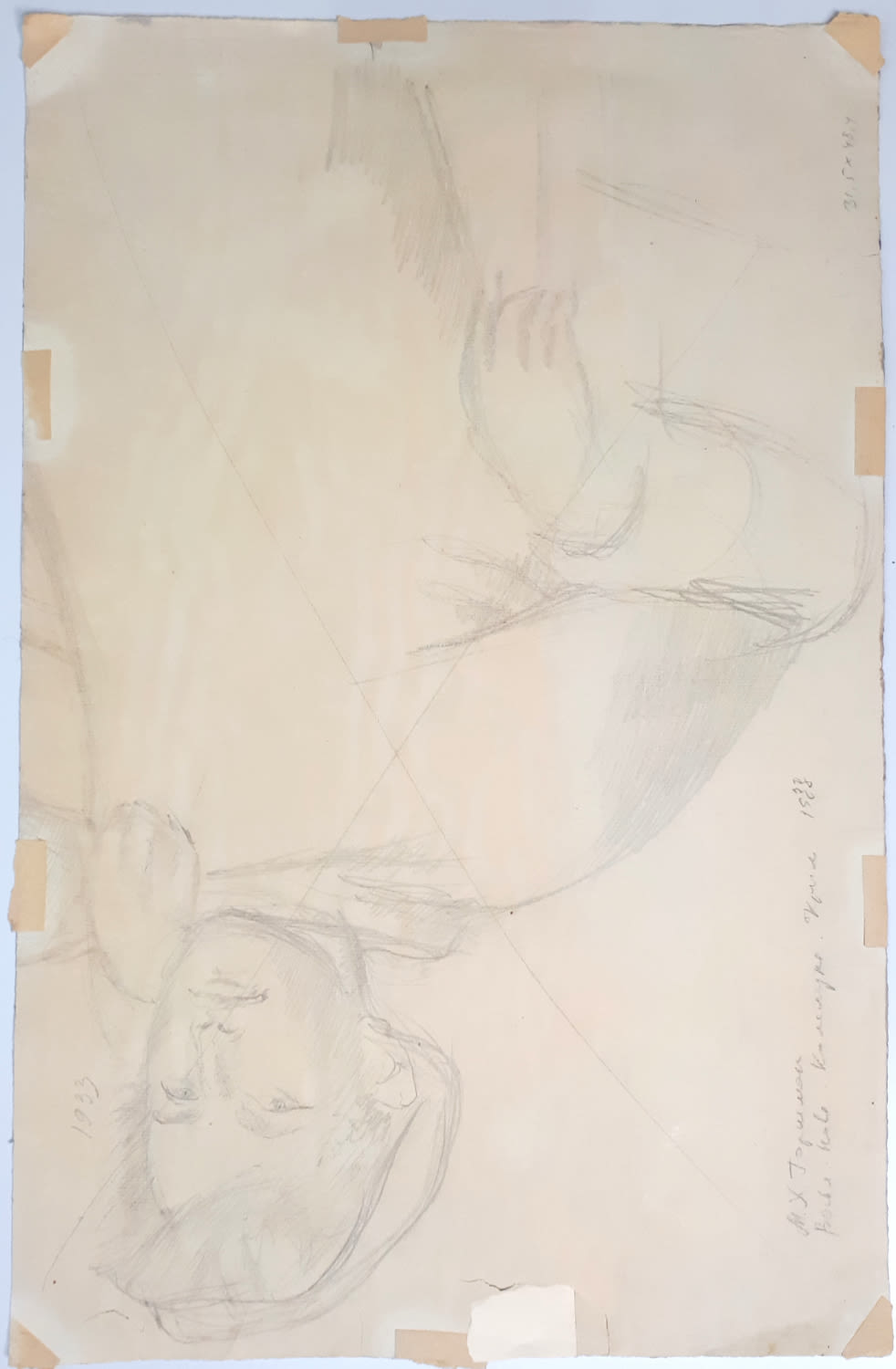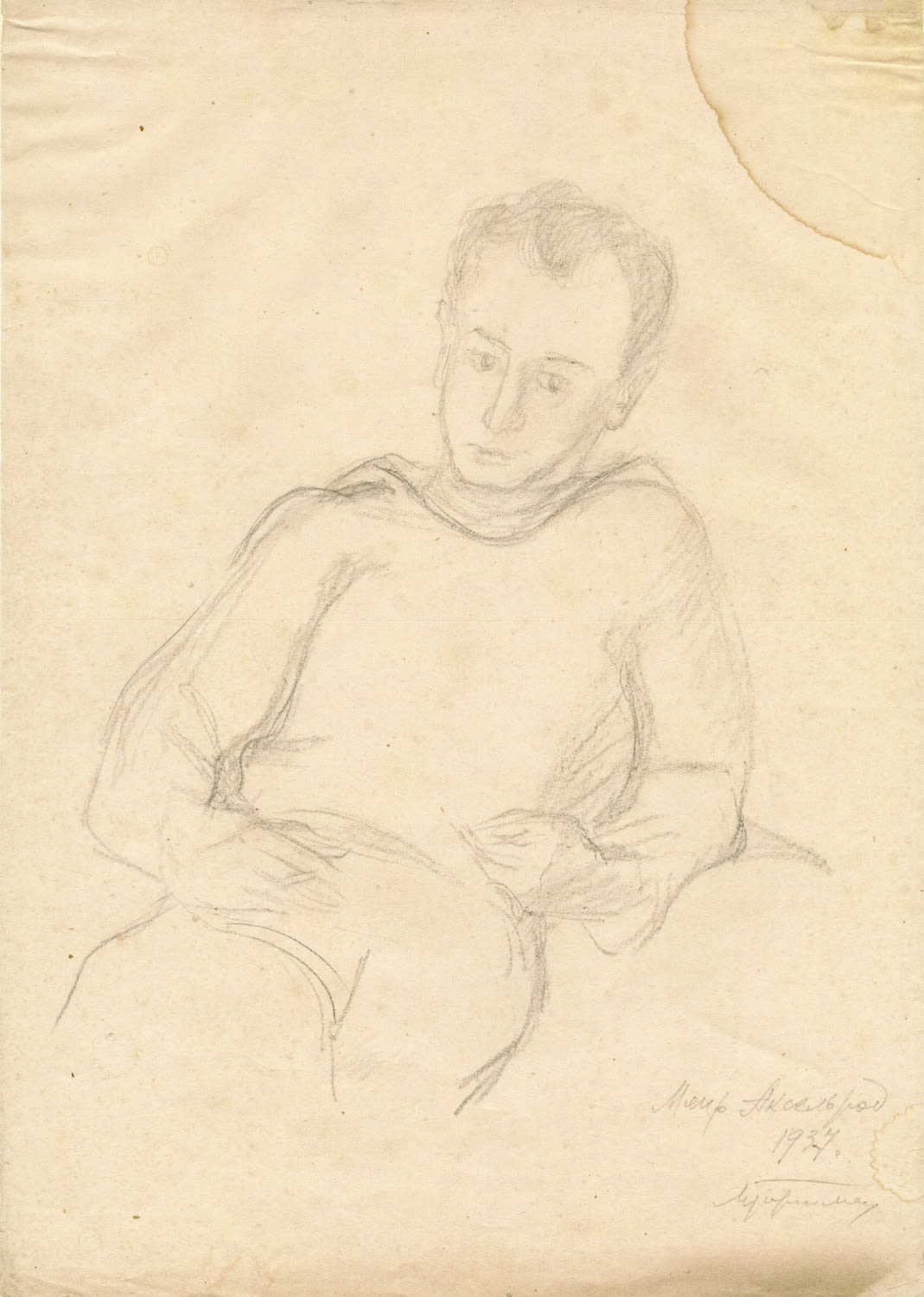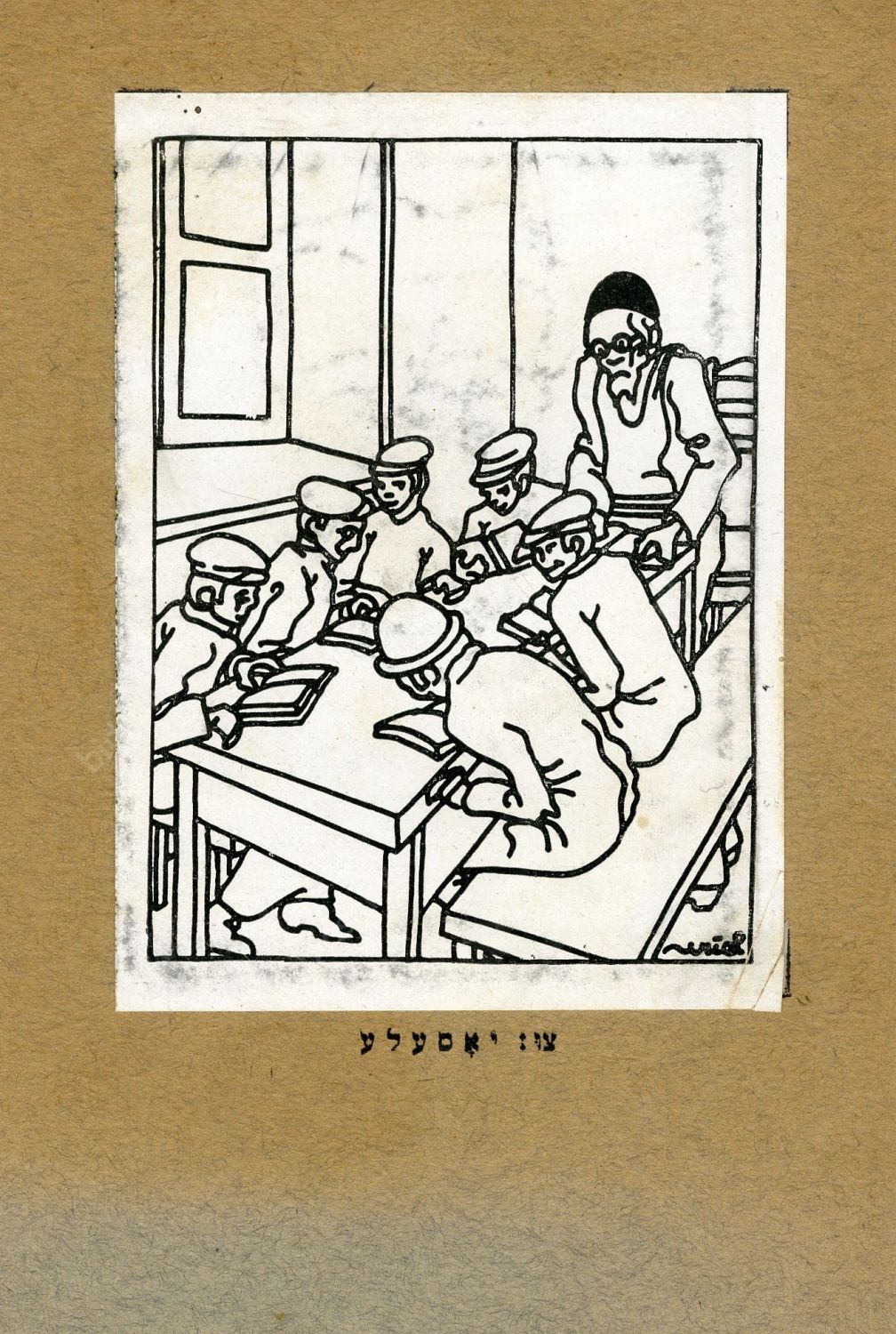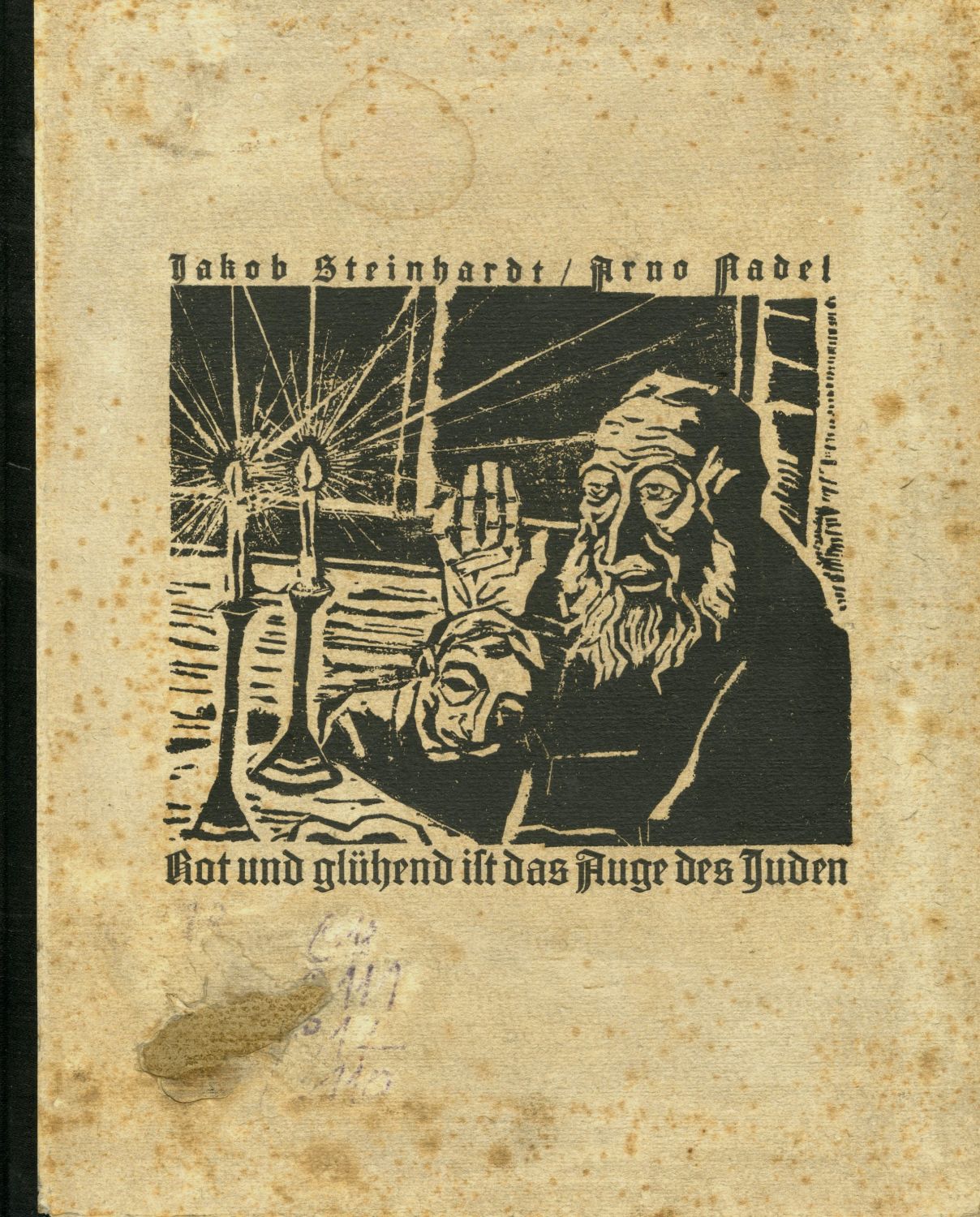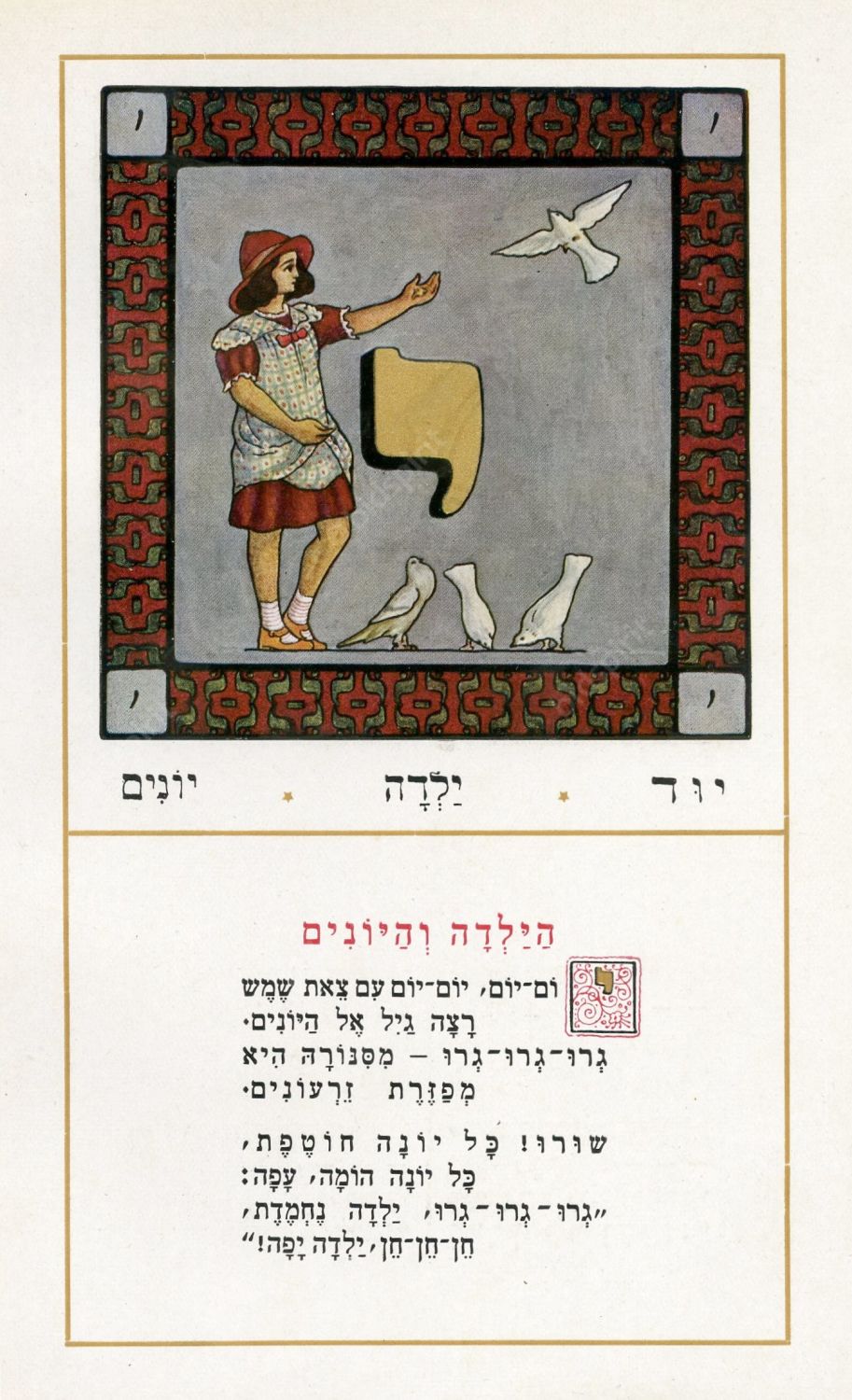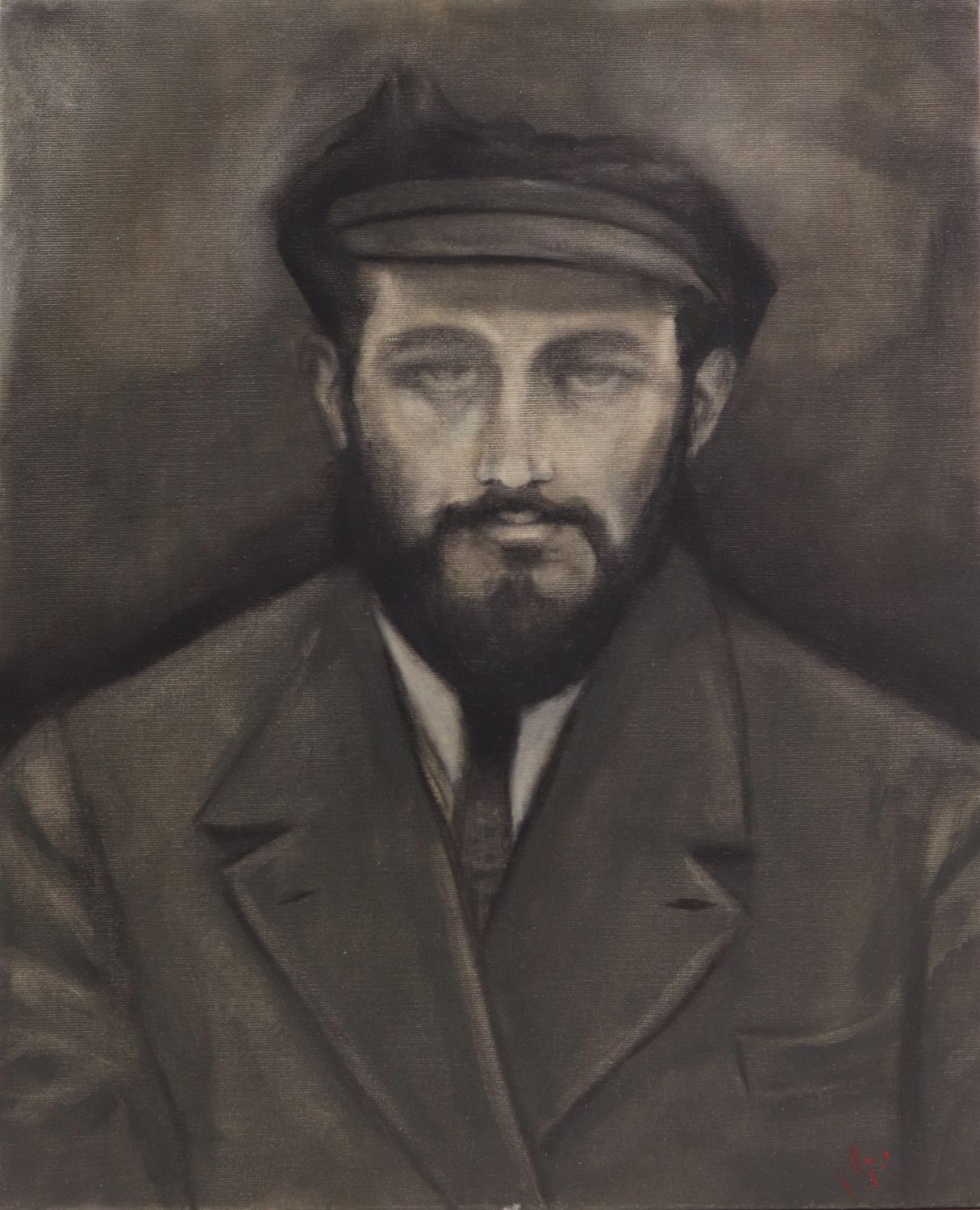Mendel Gorshman - a landscape of Jewish autonomy in Vio Nova painting - watercolor on paper - signed, depicted, and dated on the back - 1933. On the back of the painting is also a pencil drawing by Mendel Gorshman - a portrait of the leader of the Jewish commune in Vio Nova Menachem Elkind apperantly.
Mendel Gorshman [1902-1972], a Jewish-Soviet painter and graphic artist from the "High School of Painters" established in Moscow in 1920, where Jewish artists as El Lissitzky, Meir Axelrod, Solomon Boim, and others studied. Gorshman illustrated about 60 books, including books published by the Yiddish publishing house "Der Amas", such as the books of Shalom Aleichem, Peretz Markish, Madanley Mocher Sfarim, Y.L. Peretz and others. In the 1930s, Gorshman made a trip to the Jewish agricultural communities in the Soviet Union with his friend the artist Meir Axelrad. At that time he performed several works that dealt with the life of the kibbutz Via Nova which was established by the 'retirees of the Labor Battalion' in the Crimean peninsula who immigrated to the Soviet Union.
The commune "Vio Nova" (Esperanto: Vojo Nova, "New Way") was founded by a group of 30 members of the Labor Battalion, led by Menachem Elkind in the Crimea. These were members of the Third Aliyah who experienced the severe unemployment that broke out in Eretz Israel in 1926. In the Palestine Battalion, two groups were formed whose social unrest due to unemployment exacerbated the differences between them. The left-wing group led by Menachem Elkind, saw communism and the Soviet Union as an ideal. They withdrew from the battalion and responded to Elkind's call to emigrate to the Soviet Union for the Crimean peninsula, and established Jewish autonomy in it. For the group of descendants, 60-80 men and women, the Soviets assigned an abandoned farm, near the city of Yevpatoria. The name of the kibbutz was determined in the Esperanto language - "Vio Nova", since a Hebrew name was forbidden, and name in Yiddish or Russian, the members did not want to take it upon themselves, in order to maintain their distinct identity. However, the everyday language of the kibbutz was Hebrew. The settlers established a kibbutz with all its recognized institutions of israeli kibbutz: a dining room and a children's home, a joint commune for clothes and a joint expenditure fund, evenings of singing together, large areas for cultivation, and Hebrew and Jewish education. They faced extreme cold and lack of equipment and clothing, but were idealists and believed in their way. In 1935, the authorities announced the abolition of the kibbutz institutions, the children's home and the dining room, and the definition of the place as a kolkhoz called "Druzhba Narodov" ("Brotherhood of Nations"). Most of the original settlers, including Elkind himself, left for Leningrad and Moscow, some of whom were injured during the great Murders, and were replaced by Russian and Ukrainian settlers.
In 1930, the Soviet authorities sent to "Vio Nova" a number of artisans to document life on the Jewish kibbutz in the Soviet Union, "Reflecting the achievements of socialist construction, collectivization and electricity distribution". Among the artists were the painters Mendel Gorshman and Meir Axelrod (Who was then 28 years old). An exhibition of these paintings by Axelrod, entitled "The Lost Paradise", was displayed at the Ein Harod Museum, and Gorshman's own paintings have not been exposed to the public over the years. Renowned Yiddish writer Shira Gorshman was also among the group's members at Vio Nova. She married Mendel Gorshman and with him left the place and moved to Moscow. In 1989 she immigrated to Israel and published the book "Hannah's Sheep and Cattle", in which she described her experiences in Vio Nova, accompanied by illustrations of her late husband. A few years after her rise, Channel One produced the documentary "A New Way" (see here ), directed by Arn Petenkin, in which Gorshman told her experiences in the Labor Battalion and in Vio Nova.
See also Zvi Livna's important book "Jewish Farmers in the Soviet Union" (Poalim Library Publishing, 1965) in which many testimonies and memories of an unconventional Jewish world that has almost completely disappeared.
Presently, Gorshman's works are displayed in various museums around the world, including the National Museum of Art of Painting in Moscow, and the Ethnographic Museum in St. Petersburg.
Provenance: Mendel Gorshman's estate, purchased from his son.
Size: 48x32 cm. Tear in the right middle. Peeled paint in the corners. general condition good.


